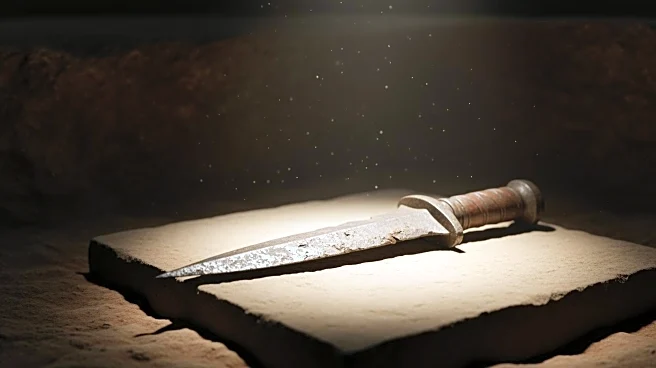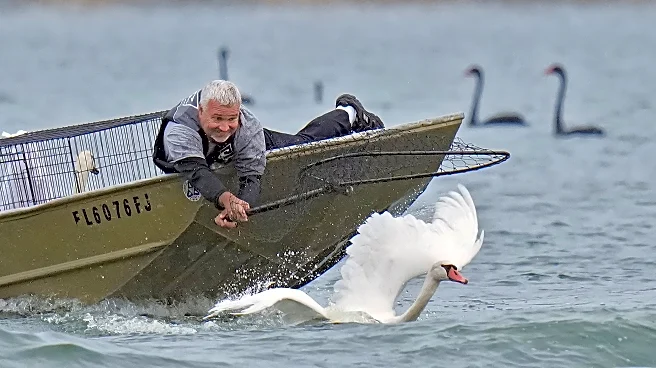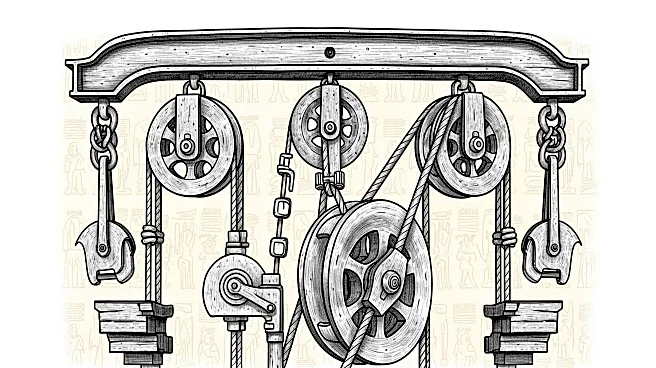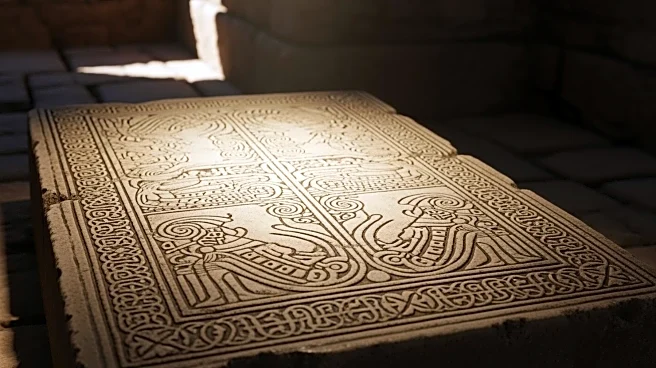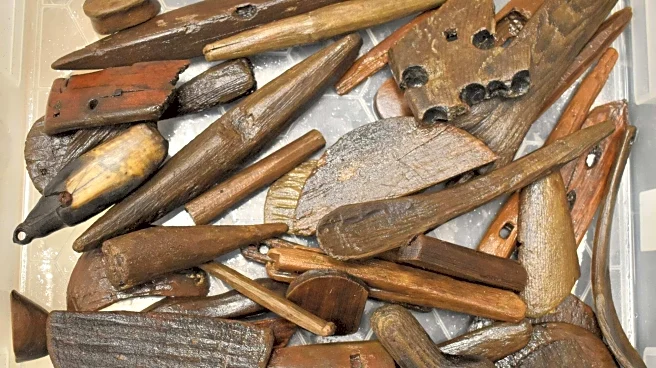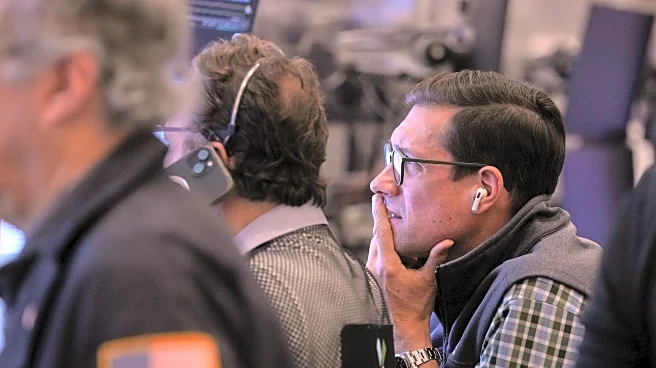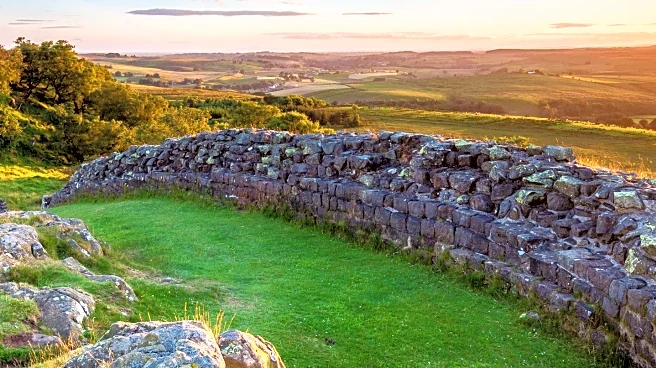What's Happening?
Archaeologists, while filming a TV show about Britain's past, have uncovered a 2,000-year-old murder mystery involving a teenage girl from the Iron Age. The discovery was made during the excavation of the Durotriges, a Celtic tribe in Dorset. The skeleton
was found facedown with potential bindings at the wrists, suggesting a violent death. Injuries on the arms and upper body indicate the girl was brutalized before her death. This burial practice was unusual for the time, leading researchers to believe she may have been a sacrificial victim. The find is part of a broader investigation into the lives and deaths of the Durotriges, with previous discoveries of other potential sacrifice victims.
Why It's Important?
This discovery sheds light on the social and cultural practices of ancient Celtic tribes in Britain, particularly the Durotriges. The evidence of sacrificial practices and the matriarchal structure of the society provide valuable insights into gender roles and social hierarchies of the time. The findings suggest that women held significant power, owning land and dictating marriage customs. However, the presence of sacrificial victims indicates a darker aspect of their society, where certain individuals, possibly from lower social strata or outsiders, were deemed expendable. This research contributes to a deeper understanding of ancient societies and their complex social dynamics.
What's Next?
Further analysis, including DNA testing, is expected to confirm the gender and possibly the origins of the discovered remains. This could provide more information on the social status and background of the victims. Continued excavations and studies may reveal additional burial sites and artifacts, offering more comprehensive insights into the Durotriges' way of life. The findings could also prompt a reevaluation of existing theories about Celtic societies in ancient Britain, influencing future archaeological research and historical interpretations.
Beyond the Headlines
The ethical considerations of handling ancient human remains are significant, as researchers must balance scientific inquiry with respect for the deceased. The emotional impact on those involved in the discovery, as expressed by TV presenter Sandi Toksvig, highlights the human connection to history and the responsibility of archaeologists to preserve and honor past lives. This case also raises questions about the representation of women in historical narratives and the importance of acknowledging their roles in ancient societies.
